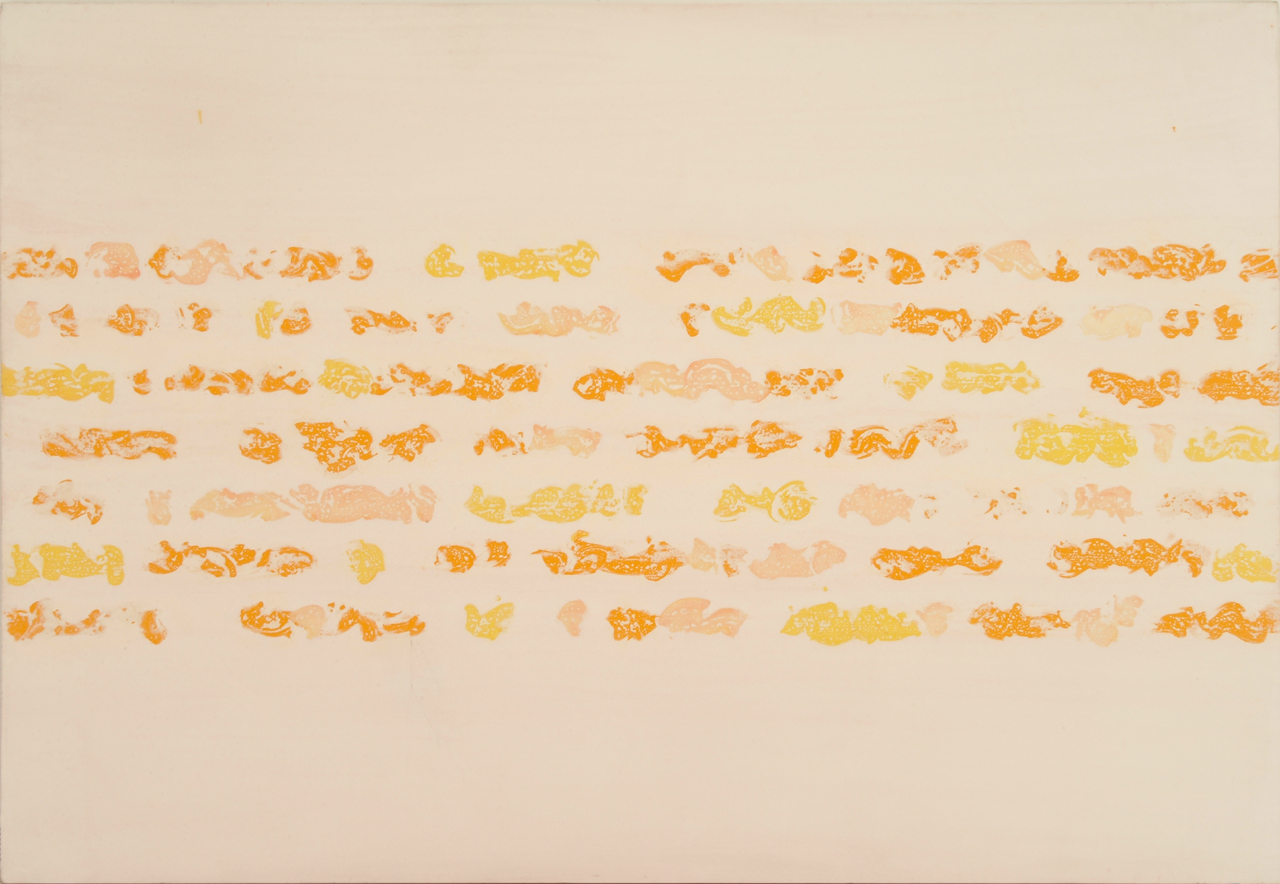Reigl’s painting developed in France and became internationally recognised after 1957. At the beginning of her emigration, she was embraced by the surrealist movement, but her artistic development was also influenced by non-figurative painting. As a process work (déroulement), Prelude preserves and continues the technique of surrealist automatic writing, but its aim is not to represent uncontrolled unconscious processes, but to evoke musical structures through writing-like painterly gestures. The title of the work reminds us that in creating it, she listened to classical composers (Mozart, Bach, Beethoven) and, influenced by them, tried to reproduce the musical structures she had heard in horizontal lines using painterly means (see prelude, toccata, cantata, fugue, rondo, etc.). The resulting automatic writing, which unfolds in several lines and is musically motivated, provides the basic structure of her paintings, which she combines with larger surfaces on the canvas. The starting point for her work was the raw, unprimed, unframed canvas fixed to the wall; on this surface she created gestures reminiscent of writing. She also used new tools; in this case a simple kitchen sponge cut up and soaked in paint to create the blocks of ‘musical writing’. She applied heavily oily, water-repellent paints for the script, and then, laying the canvas on the ground, often in several layers on both sides, she worked over it with painterly surfaces, using materials of different character (watercolour, oil, etc.), the combined effect of which produced the image.
József Készman

